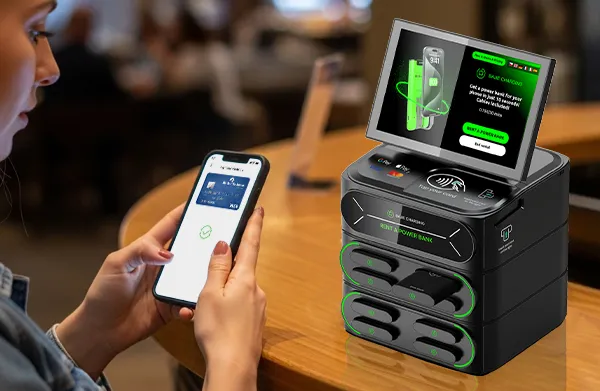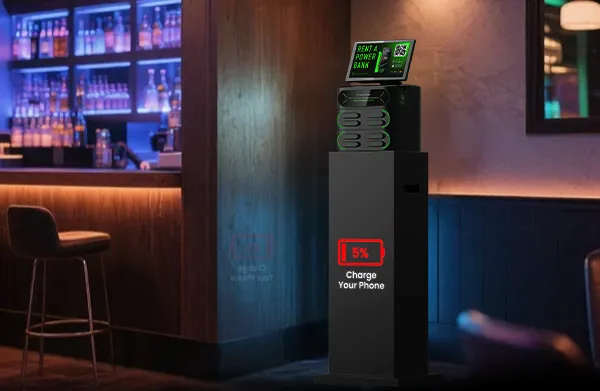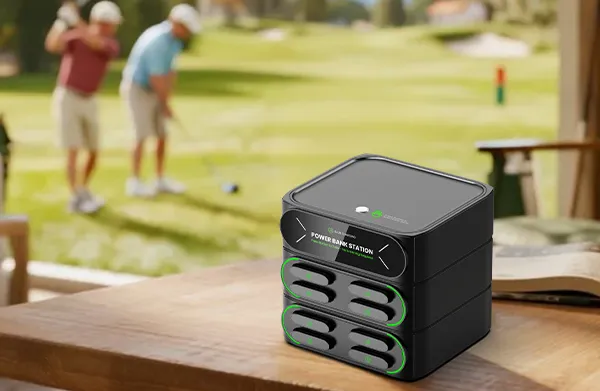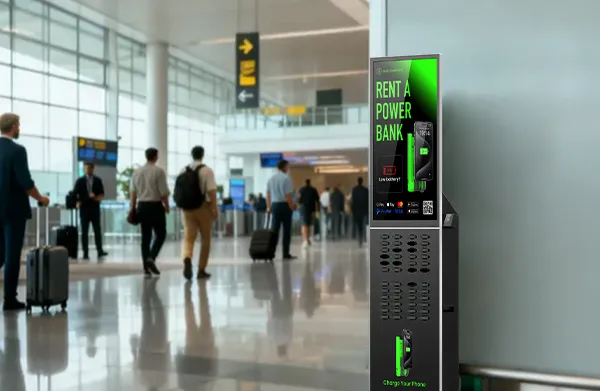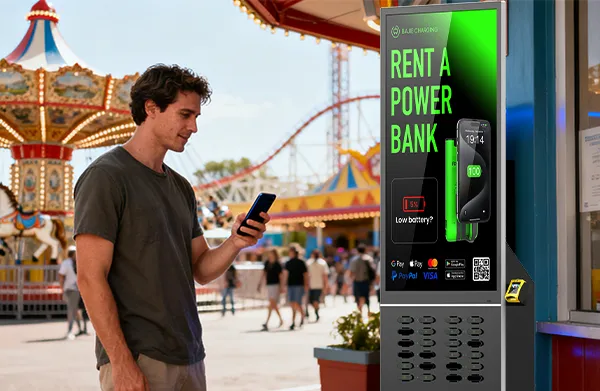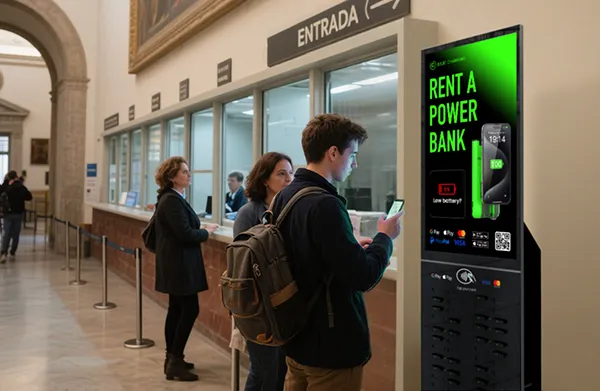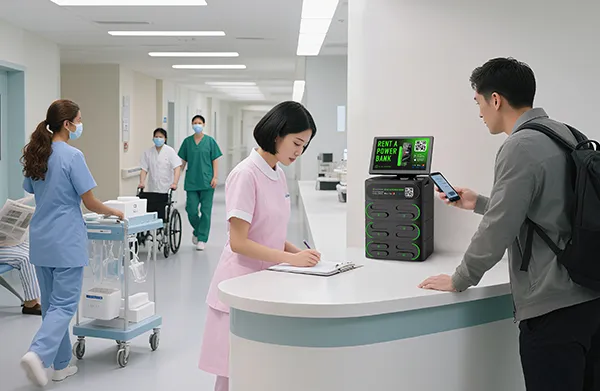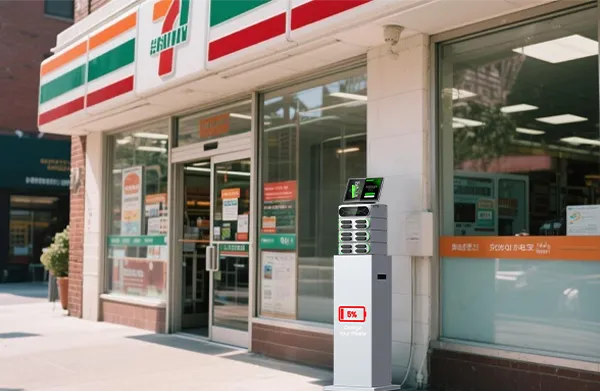Power bank rental stations address users’ immediate charging needs when their phones run out of battery outdoors, creating multiple revenue streams such as rental income and advertising. Users can easily borrow shared power banks in restaurants, shopping malls, stations, and bars, then return them at any outlet under the same brand.
According to The Business Research Company, the global convenience store market is projected to reach USD 1.35 trillion by 2029. Open 24 hours a day and located throughout business, residential, and commercial areas, convenience stores provide quick meals and daily necessities, serving consumers around the clock.

In office districts, convenience stores have become a primary option for workers to grab meals. During peak hours, lines often form, and many customers use their phones for videos or games while waiting — quickly draining battery life. Shared power banks meet this urgent charging demand while also driving additional orders for the store.
Grand View Research predicts that by 2030, the global coffee market will increase by USD 36.95 billion. Coffee shops, where people work, meet, or relax for extended periods, see high mobile usage and power consumption. Shared power banks offer quick, on-demand charging that keeps users connected throughout their stay.
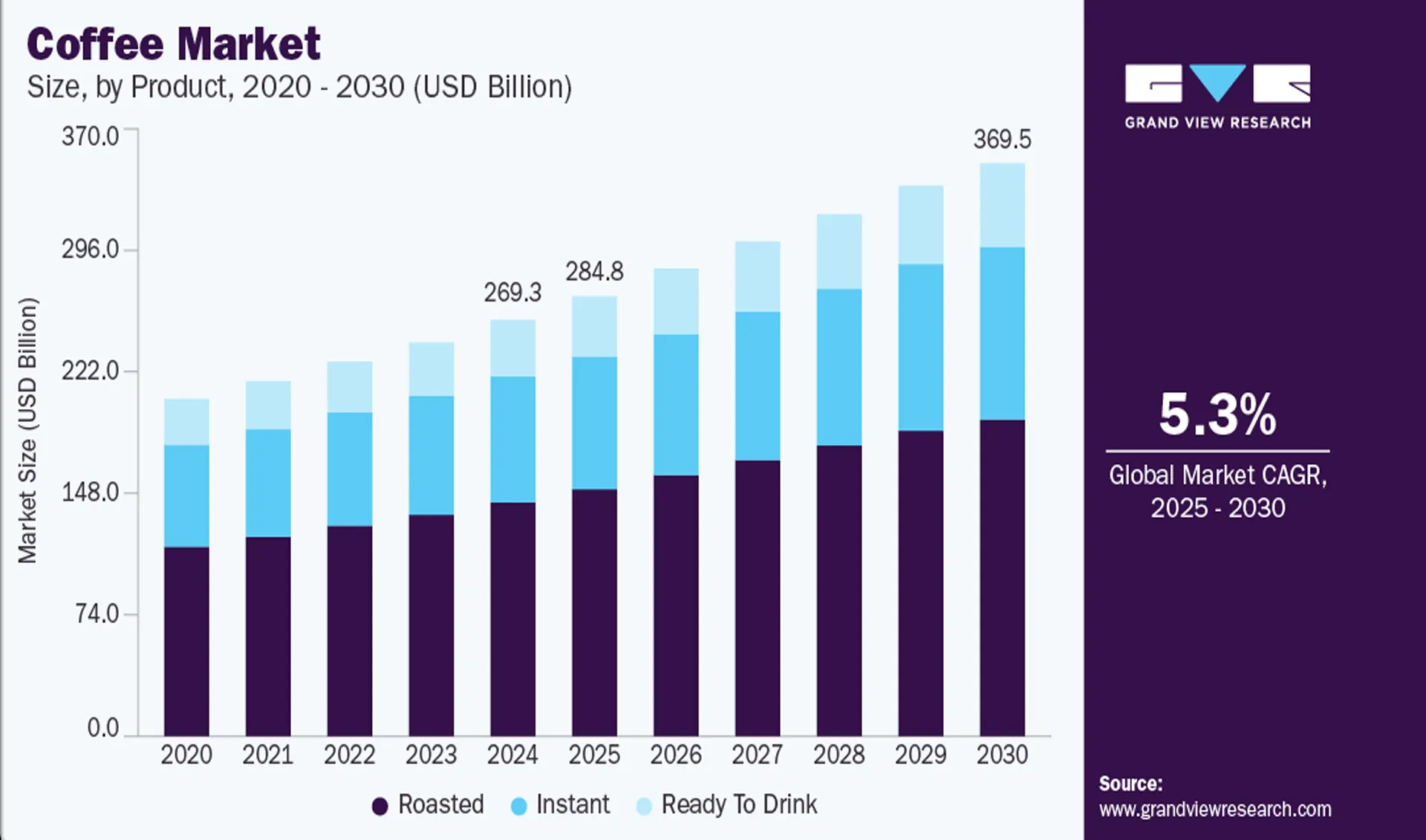
For investors, deploying modular shared power bank stations enables rapid and high-density coverage of target areas. Unlike large stations found in airports or shopping malls, modular charging units are compact and affordable, allowing quick expansion across restaurants, bars, and convenience stores. This approach helps investors achieve scale effects and build market presence faster.
1. Why High-Density Coverage Matters for Rental Power Banks?
Meeting instant charging needs:
When users’ phones run low, they can’t travel far to find a charging station. By deploying power bank rental units in high-traffic areas such as malls, restaurants, hospitals, convenience stores, and airports, investors ensure users can easily access charging whenever needed.
High-density coverage provides seamless access to portable charging services, improving convenience and user retention. The easier it is to borrow and return, the higher the rental frequency—helping investors achieve stable and recurring revenue.
Network effects drive user growth:
A dense network of shared power bank stations encourages user habits like “grab and go.” The broader the coverage, the more users are likely to join the network, expanding the brand’s overall market share.
Economies of scale reduce costs:
With high demand and dense site coverage, multiple income channels—from rentals to advertising—help investors grow their business efficiently. More stations mean more usage, lower unit costs, and greater operational efficiency.
Modular designs enable flexible scaling:
Investors can adjust deployments based on market feedback, optimizing costs and expanding coverage quickly.
2. How Structured Charging Lockers Enable Rapid Market Coverage?
Core-location deployment for fast market expansion
Based on city heat maps and foot-traffic data, rental power banks are first placed in key business districts, transportation hubs (airports, railway stations), major entertainment venues, and high-traffic F&B locations. This ensures precise coverage of high-frequency usage scenarios and improves device utilization. By creating a dense network of power bank rental stations in critical areas, investors can quickly build brand visibility and gain an advantage for broader expansion of their shared power bank business.
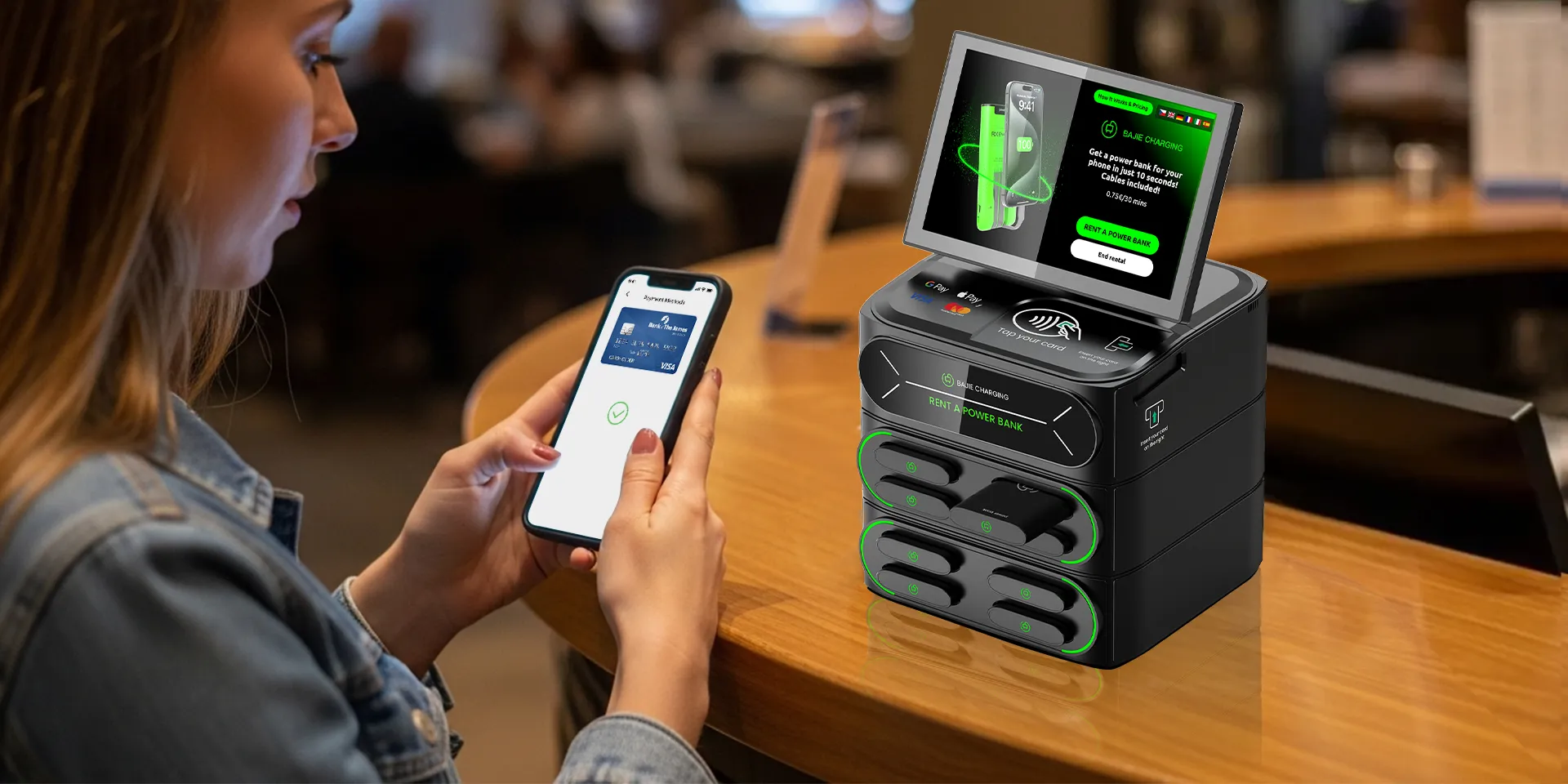
All-scenario deployment to precisely match market needs
Modular power bank sharing adopts a flexible module design, allowing scalable expansion from 4-slot to 24-slot units. This enables accurate adaptation to different site types—from small convenience stores and mid-sized supermarkets to transportation hubs with heavy traffic.
Investors can manage locations with refined operations based on dynamic rental data. In high-activity spots such as airports and commercial districts, more modules can be added quickly to increase revenue. At sites with lower rental frequency, modules can be reduced to optimize configuration and improve operational efficiency.
Investors can also use various display stands—floor-standing, wall-mounted, and others—to deploy structured charging stations quickly across convenience stores, restaurants, bars, and similar venues. Highly flexible operation and deployment strategies help power bank rental services reach high-frequency consumption locations across the city more efficiently.
Conclusion
A highly dense network of phone charging locker service sites enables users to enjoy convenient mobile charging anytime, anywhere. The instant-use rental experience increases the frequency of power bank station usage. With the network effect created by a wide cell phone charging station layout, investors can build strong brand influence in their local market and secure a leading position in the phone charging locker sector.
Thanks to flexible configuration, modular charging stations help investors reduce costs and enter the market quickly, then expand precisely based on real-time operational data. With the same budget, modular charging stations can significantly increase network density, accelerating the scaling of mobile phone power bank businesses.
October 22, 2025


